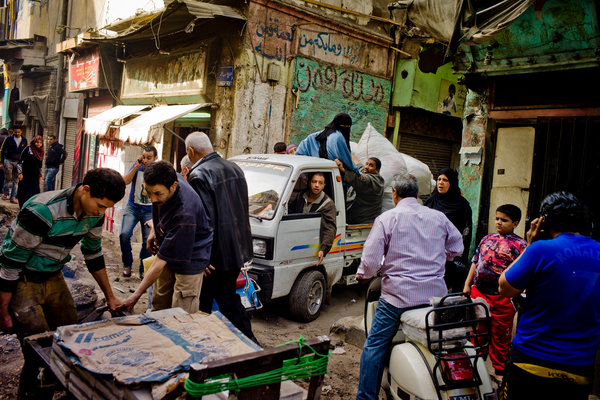CAIRO — The telltale signs in
post-revolutionary Egypt are not just the riots and rapes, the mega-traffic
snarls and sectarian battles. There is also the highway ramp in Ard El Lewa.

After the revolution two years ago, working-class residents of that vast informal neighborhood, tired of having no direct access to
the 45-mile-long Ring Road, took matters into their own hands. In the absence
of functioning government, they built ramps from dirt, sand and trash. Then
they invited the police to open a kiosk at the interchange.
Even for Cairo, do-it-yourself infrastructure on this
scale is unusual. For years, the government of Hosni Mubarak turned a blind eye
as millions of poor Cairenes built homes without permission on private plots of
agricultural land in places like Ard El Lewa, greasing the palms of bureaucrats
for basic services.
But since the revolution, the pace of illegal
construction has only exploded, like so much else here. Along with the spread
of graffiti and of street vendors clogging the sidewalks downtown, this
explosion is either a sign of post-revolutionary populist empowerment or of
chaos, depending on one’s perspective. Egyptians seem to be wrestling over
which every day.
A struggle — and also a race — pits the forces of
collapse against the halting emergence of a new urban class, born in the
aftermath of the revolution. Egyptians have long been experts at fending for
themselves in a top-down system where the president ruled by fiat and the
government was unaccountable. But now they must improvise as never before.
This means that Egyptians are figuring out anew how
they relate to one another and to the city they have always occupied without
quite fully owning — figuring out how to create that city for themselves,
politically and socially, as well as with bricks and mortar. Headlines have
naturally focused on the macro-battles, but the bird’s-eye view does not always
reveal what is happening at street level, on corners and in neighborhoods,
where daily life today means navigating new relationships with fellow citizens
and the spaces they share.
As Omar Nagati, a young Egyptian architect and planner,
put it the other day: “This was always a revolution about unjust urban
conditions and about public space. The ramp is just one example. People now
realize they have the right to determine what happens on their own streets, to
their own neighborhoods. So there’s a battle of ownership throughout Egypt:
over whose space this is, and who determines whose space it is.”
* To read more, click here.